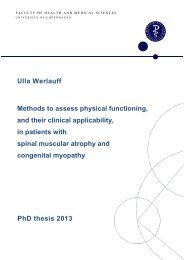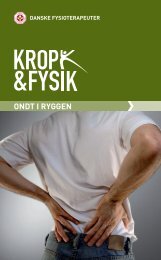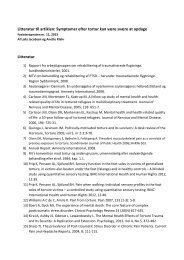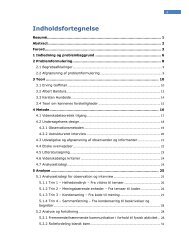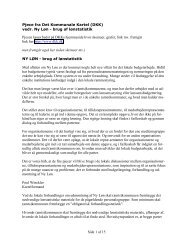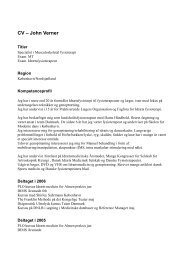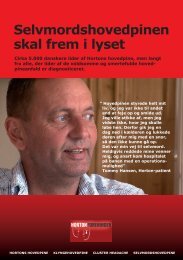Kristian Thorborg's Phd Thesis
Kristian Thorborg's Phd Thesis
Kristian Thorborg's Phd Thesis
Create successful ePaper yourself
Turn your PDF publications into a flip-book with our unique Google optimized e-Paper software.
STUDY II<br />
The Copenhagen Hip And Groin Outcome Score (HAGOS): Development<br />
and validation according to the COSMIN check list<br />
Material and methods<br />
Development of the questionnaire<br />
The methodological framework for developing and evaluating a PRO questionnaire included the<br />
following steps: 1) identification of a specific patient population, 2) item generation, 3) item<br />
reduction, and 4) determination of the validity, reliability and responsiveness. Steps 1 and 2<br />
involved developing a preliminary version of the questionnaire, which is described in the methods<br />
section. Step 3 involved testing the individual items and subscales of the preliminary version by<br />
analysing patient responses. Based upon these analyses, a final version of the questionnaire was<br />
decided upon. Step 4 involved testing the final version of the questionnaire for validity, reliability<br />
and responsiveness. Steps 3 and 4 are described in the results section. A flowchart of the complete<br />
study process is shown in Figure 10.<br />
Population identification<br />
The goal of this instrument is to evaluate hip and/or groin disability related to impairment (body<br />
functions and structure), activity limitations (activities) and participation restrictions<br />
(participation) according to the International Classification of Functioning, disability and health<br />
(ICF),[2] in young to middle-aged physically active patients with hip and/or groin pain. Disability in<br />
this study encompasses the health dimensions within the methodological framework of ICF as<br />
categorised in one of three levels: impairment (body structure and function), activity limitations<br />
(activities), and participation restrictions (participation).[2] The objective would be to achieve a<br />
quantitative measure of the patient’s hip and groin disability according to the different levels of<br />
the ICF. The measure should reflect the patient’s perception of his/her disability as well as his/her<br />
actual disability. Physically active patients refer to any patient who is physically active at least 2.5<br />
hours a week.[2]<br />
29



